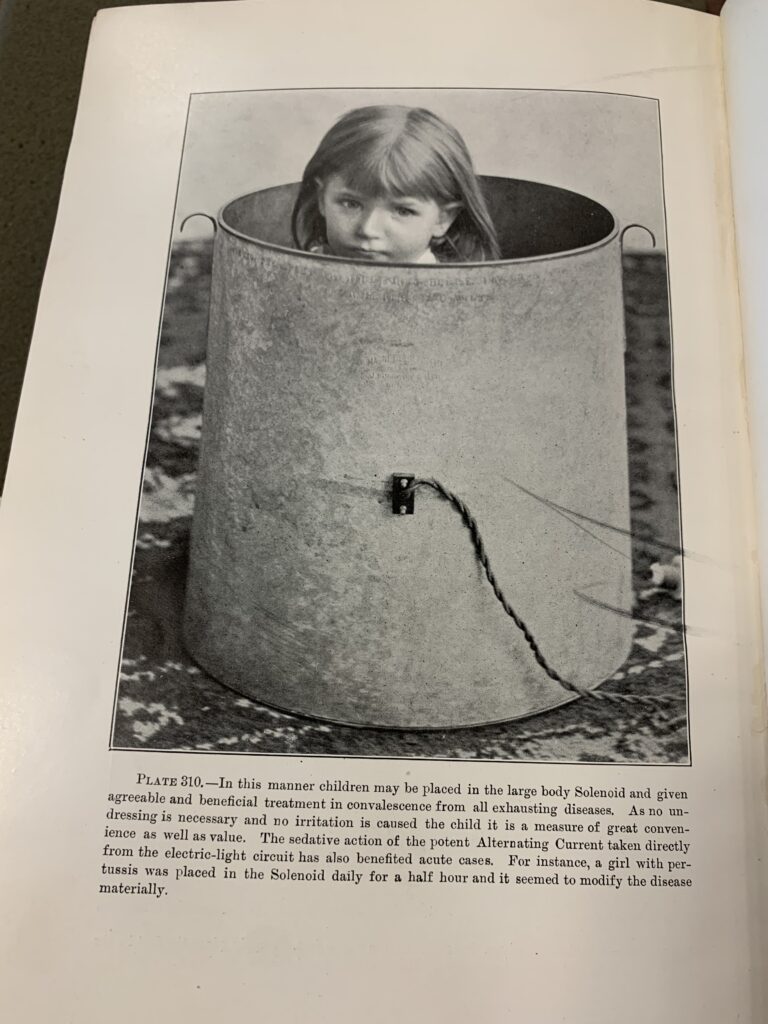In the spirit of Spooky Season, ROAAr’s October “Caption This” featured a rather fascinating image of a blindfolded man sitting in front of what seems to be a sci-fi torture device.

Once again, the captions submitted by participants did not fail to make us laugh. Here are our top 3 selections:
Harry Rajchgot: “Talk, Mr. Bond.”
Richard Orlando: “Turning a blind eye for science”
Stephen Silvester: “I think next year I’ll get my suntan in Mexico.”
The photo was originally published in the 1902 book A system of instruction in x-ray methods and medical uses of light, hot-air, vibration and high-frequency currents : prepared especially for the post-graduate home study of surgeons, general physicians, dentists by S. H., Pelton. It is available for consultation at the Osler Library of the History of Medicine, and contains the answers to many of our questions.
As it turns out, what “Mr. Bond” was going through was not too different from getting a suntan. The curious apparatus is an Arc-light Projection Lamp, used for phototherapy — the projection of light to treat illnesses. This device was often used for the treatment of tuberculosis, which was the disease affecting the man in the photograph. The round screen between the patient and the source of artificial light, a 50 amp electric lamp, is made of strips of blue glass to minimize heat. The area marked on his chest is where the light projected onto, and his eyes were covered with bandages to protect them against harmful rays. In addition to looking futuristic, this method of treatment was quite effective as well. Symptoms such as reduced appetite, weight loss, fever, and cough were shown to have improved significantly within a week of starting treatment.
It has been known since the 1870s that ultraviolet light inhibits bacteria growth. In 1895, Niels Ryberg Finsen used ultraviolet light from an electric arc lamp to treat patients with skin tuberculosis (lupus vulgaris) and won the 1903 Nobel Prize in Medicine or Physiology for his work. Tuberculosis treatment with phototherapy remained popular until the 1950s, when more effective antibiotics replaced it.
To go down a rabbit hole, leafing through the pages of the 1902 book also led me to discover another interesting medical apparatus which I think our readers and participants will appreciate:
Image: Photo taken from Monell, A system of instruction in x-ray methods and medical uses of light, hot-air, vibration and high-frequency currents : prepared especially for the post-graduate home study of surgeons, general physicians, dentists [etc.]. S. H., Pelton, Prévost L. Coyteux, & Pelton. (1902). E.R. Pelton. Osler Library of the History of Medicine (OCLC 427373448)
Many thanks to those who participated this month!













Leave a Reply
You must be logged in to post a comment.